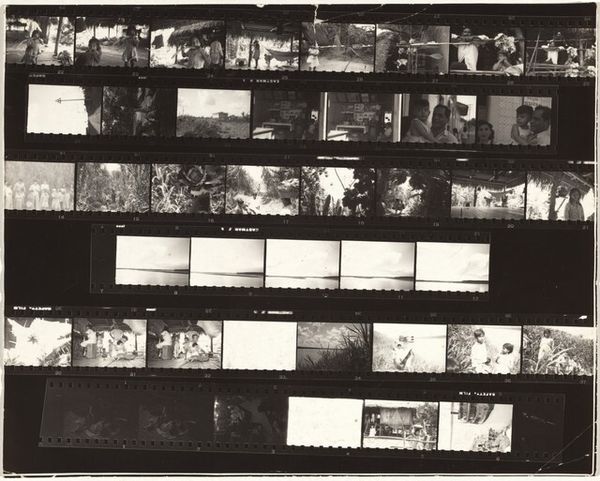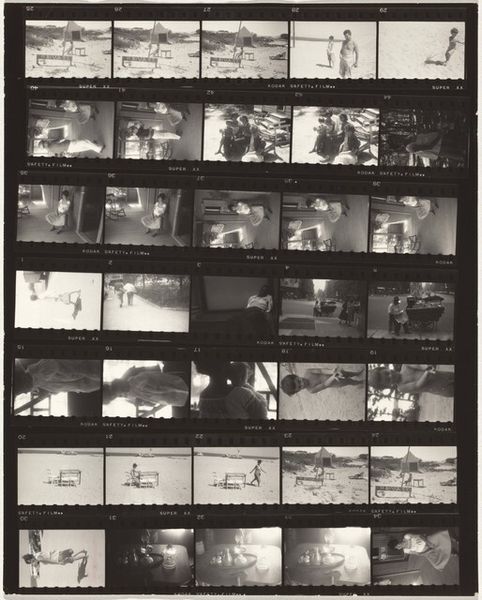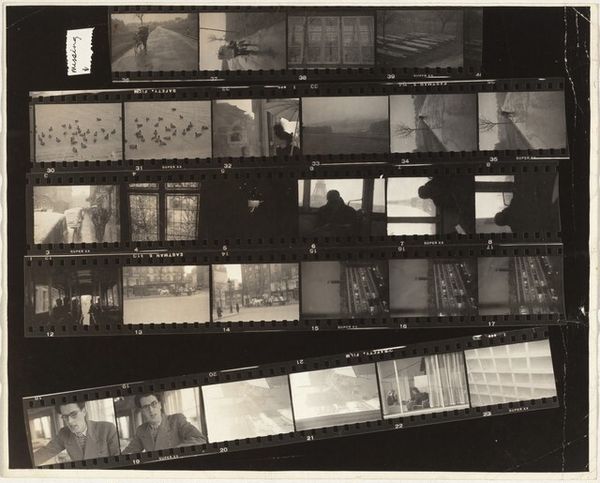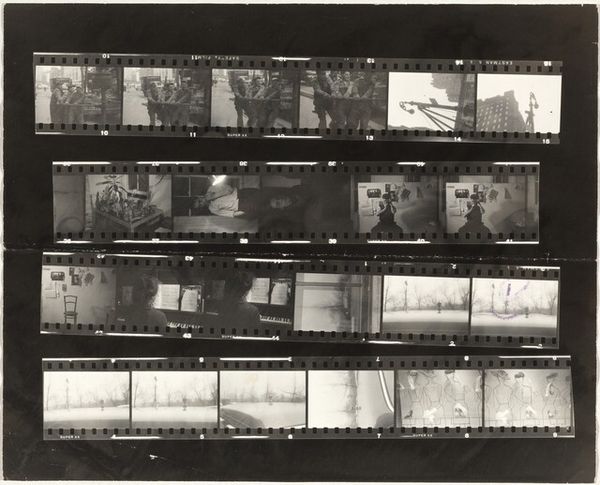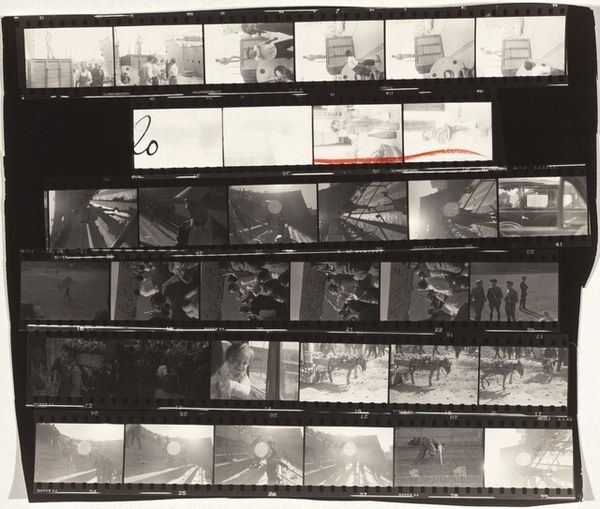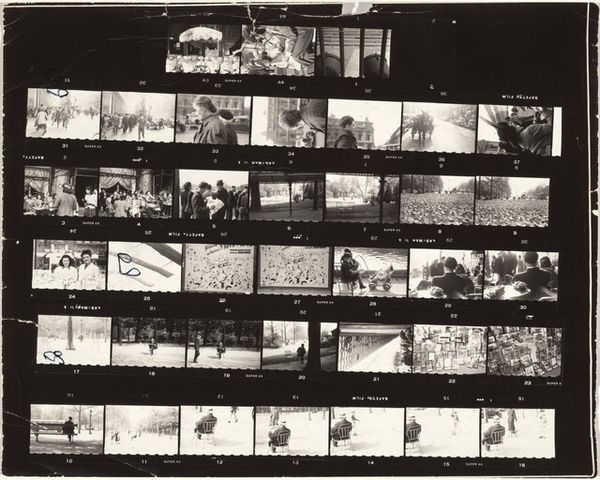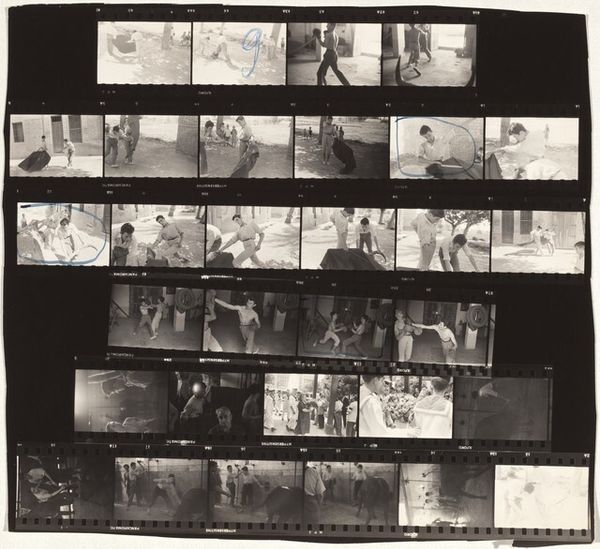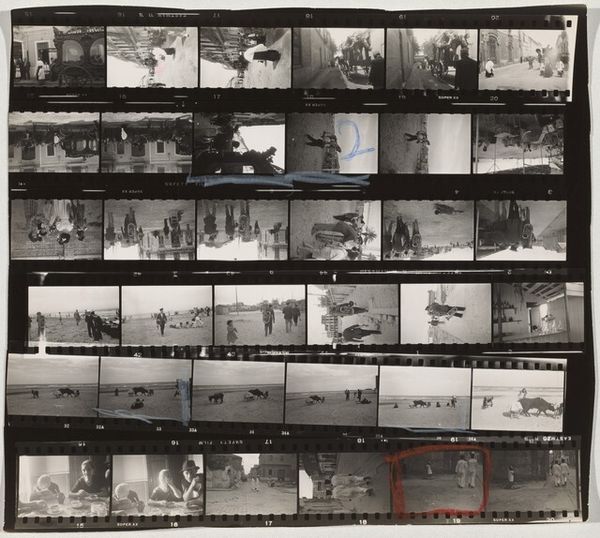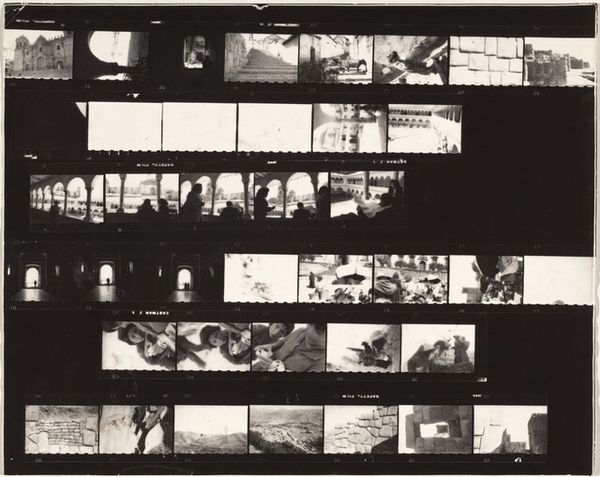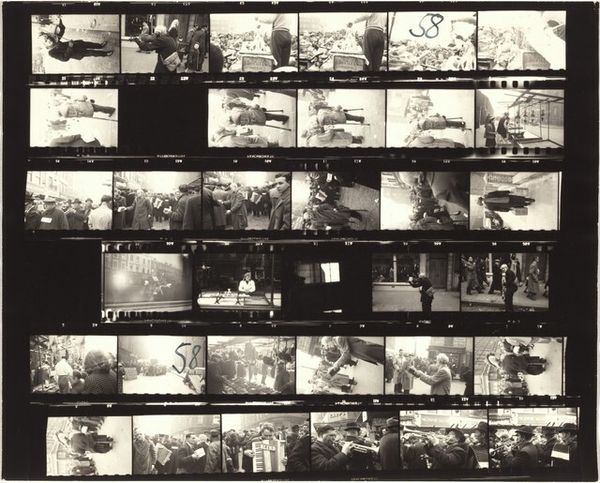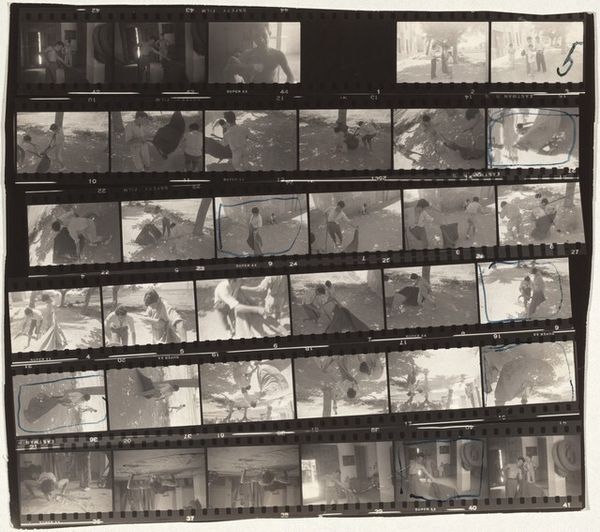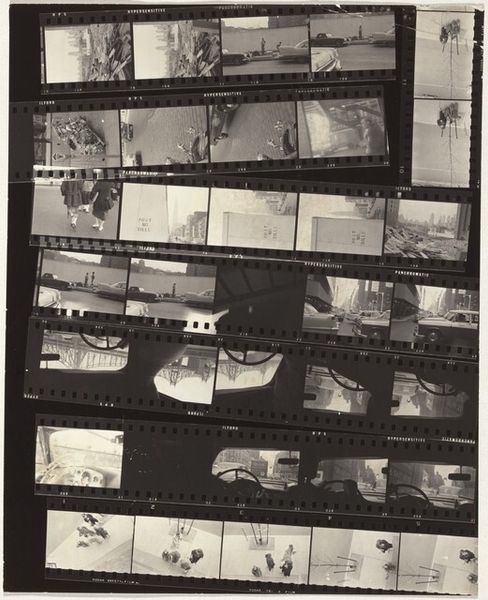
Dimensions: sheet: 21.4 × 27.7 cm (8 7/16 × 10 7/8 in.)
Copyright: National Gallery of Art: CC0 1.0
Curator: Before us is Robert Frank's "Early New York City," a gelatin silver print created between 1949 and 1951. The work shows a full film roll with its perforations. What catches your eye? Editor: The raw, almost fragmented nature of this image immediately speaks to the grit of post-war New York. You see the city and you can almost smell the chemicals and dark room. Curator: Precisely. It departs from polished presentation and elevates the film strip itself. It prompts inquiry: how does each frame’s sequencing build a narrative about urban existence? Editor: For me, that very sequencing underscores the repetitive nature of labor—we see rows of near-identical imagery—the same car multiple times. It highlights the cyclical, often monotonous experience of workers and how that’s printed and archived and how that is life. Curator: True, but I argue it's more nuanced. Observe the varied contrasts and forms—gestural human figures alongside rigid machines, creating an overall dynamic interplay. Doesn't this reveal how the artist sought to uncover the subtle harmonies within seeming discord? The use of light, as well, moves the work beyond simple materiality and labor concerns. Editor: Well, you can’t extract that dynamic interplay from the material reality of that labor and that post-war context, right? Look at the Eastman Kodak marking on the film. Frank isn’t simply “finding harmonies." The very act of recording implies certain power dynamics—who gets seen and archived and in what light. Curator: Perhaps. But I see this construction not as commentary but rather a means to capture the energy. The visual tempo achieved by the consistent framing enhances a singular atmospheric vision—evoking the stark spirit that marked Frank’s American survey. Editor: Yet this “atmospheric vision” you speak of is inextricably linked to these printing processes and socio-economic realities of mid-century America. Without acknowledging the material context that makes that art and visual style even possible, this feels, in some ways, hollow. Curator: A vital perspective. Ultimately, this reveals photography's intrinsic tension: an object capable of capturing formal elements while embedded within an often charged environment. Editor: And perhaps this reminds us that neither form nor social reality exists independently; each influences how the other appears and is later consumed and read.
Comments
No comments
Be the first to comment and join the conversation on the ultimate creative platform.
